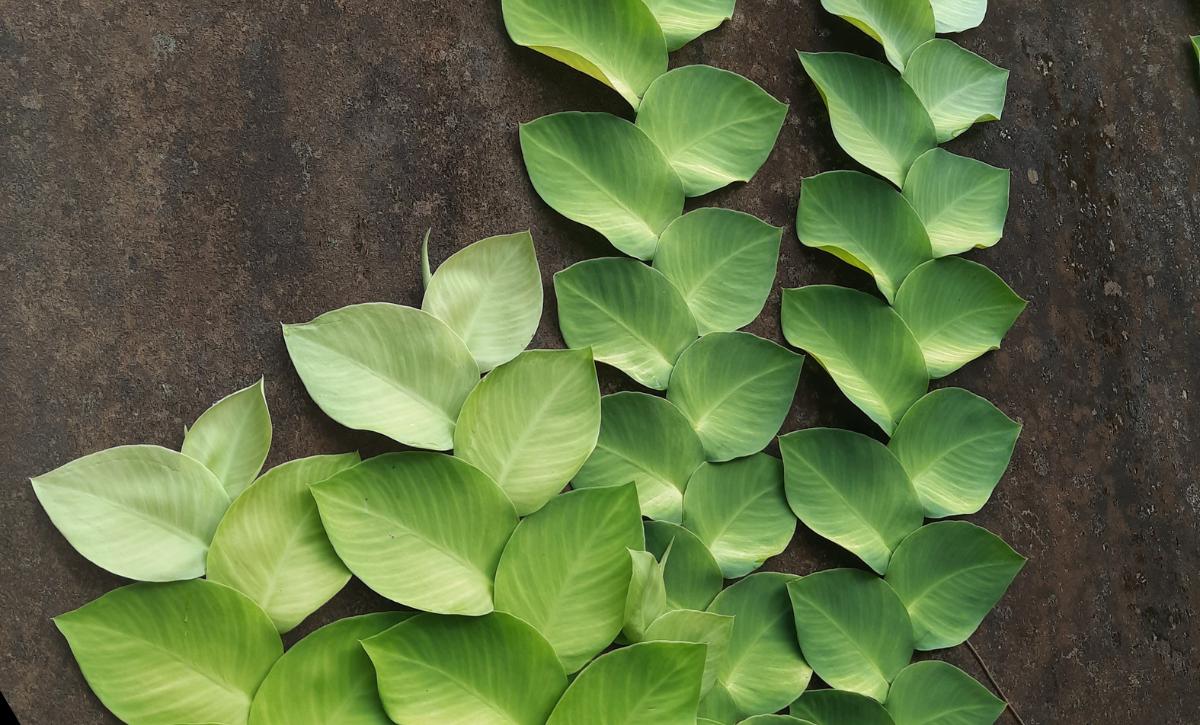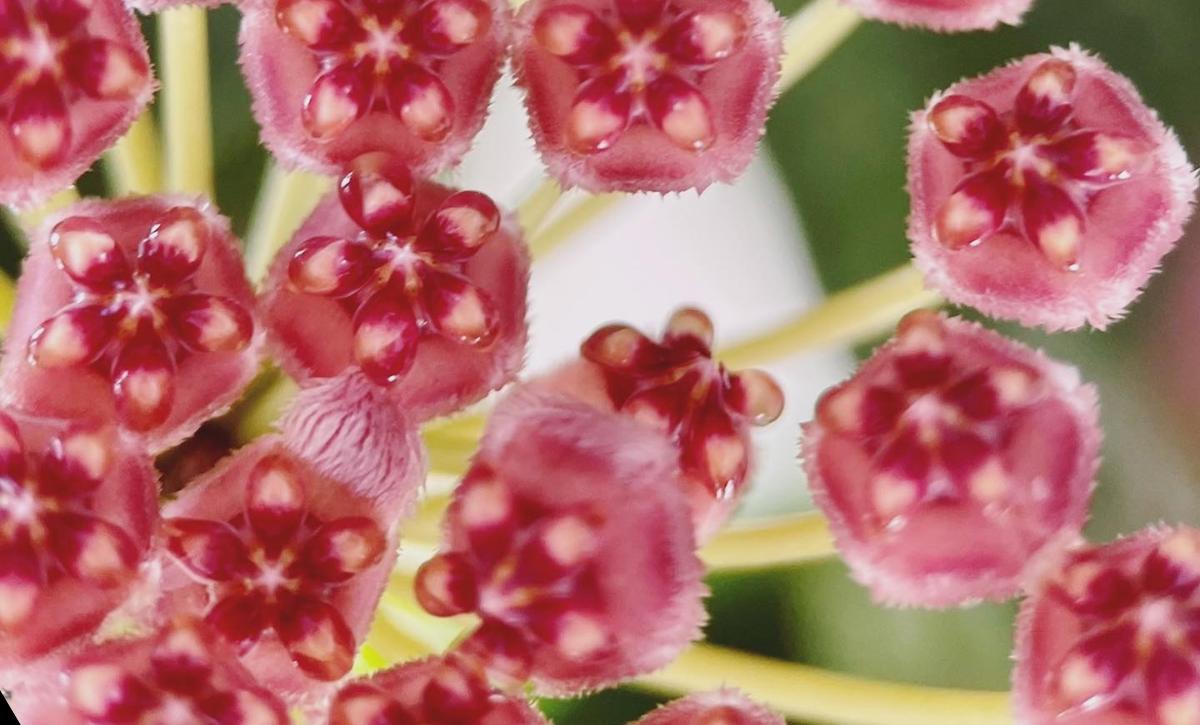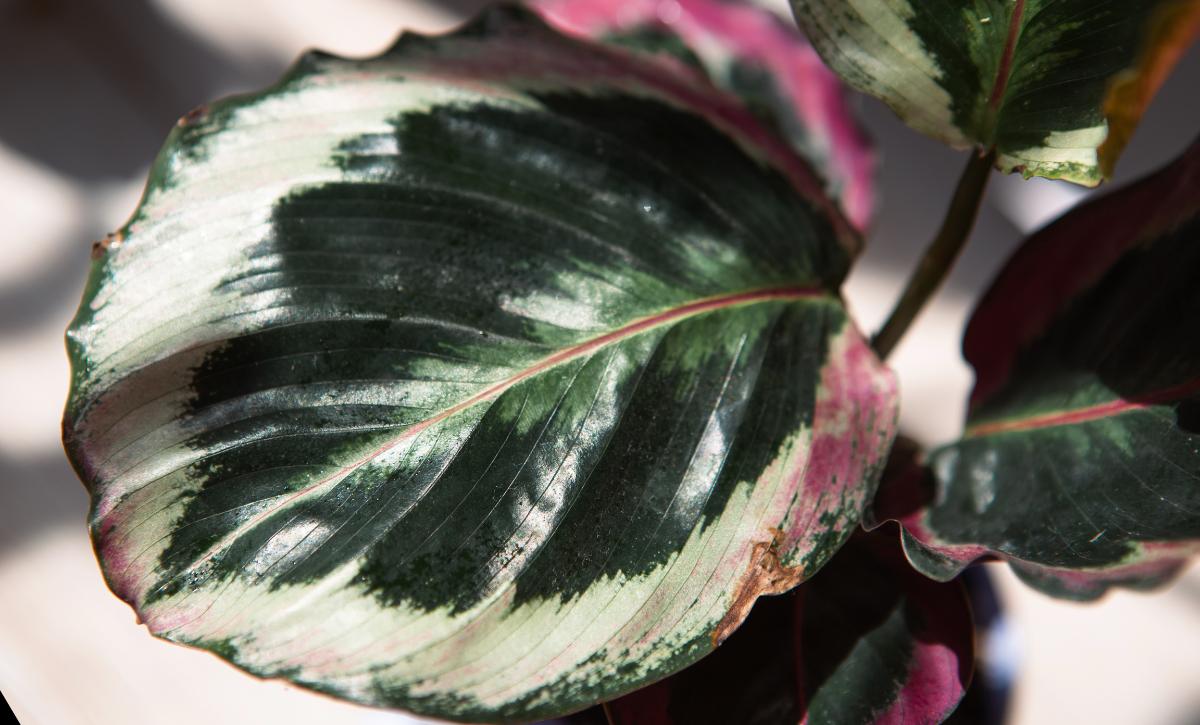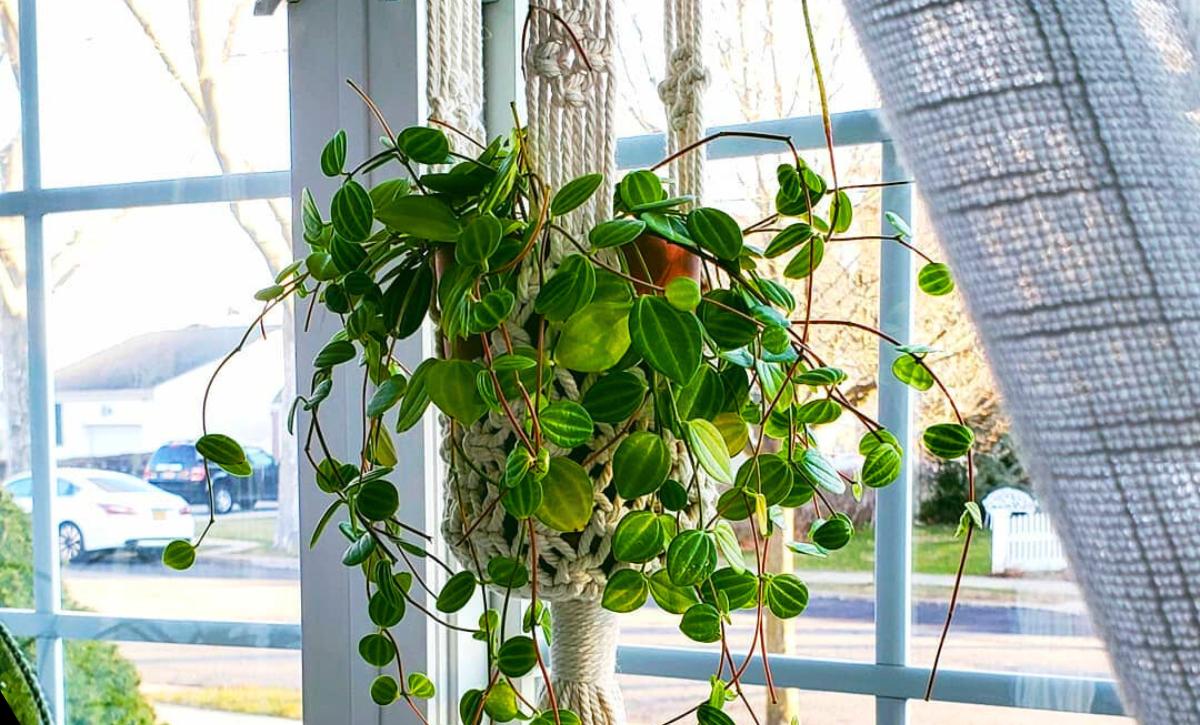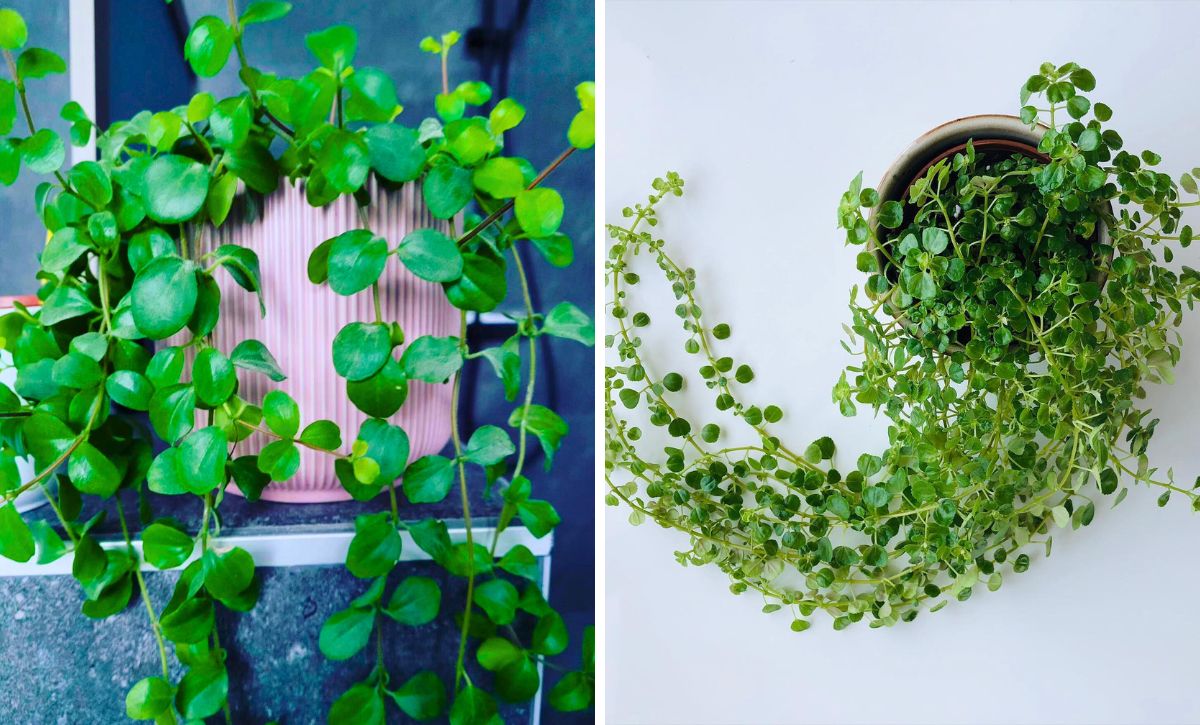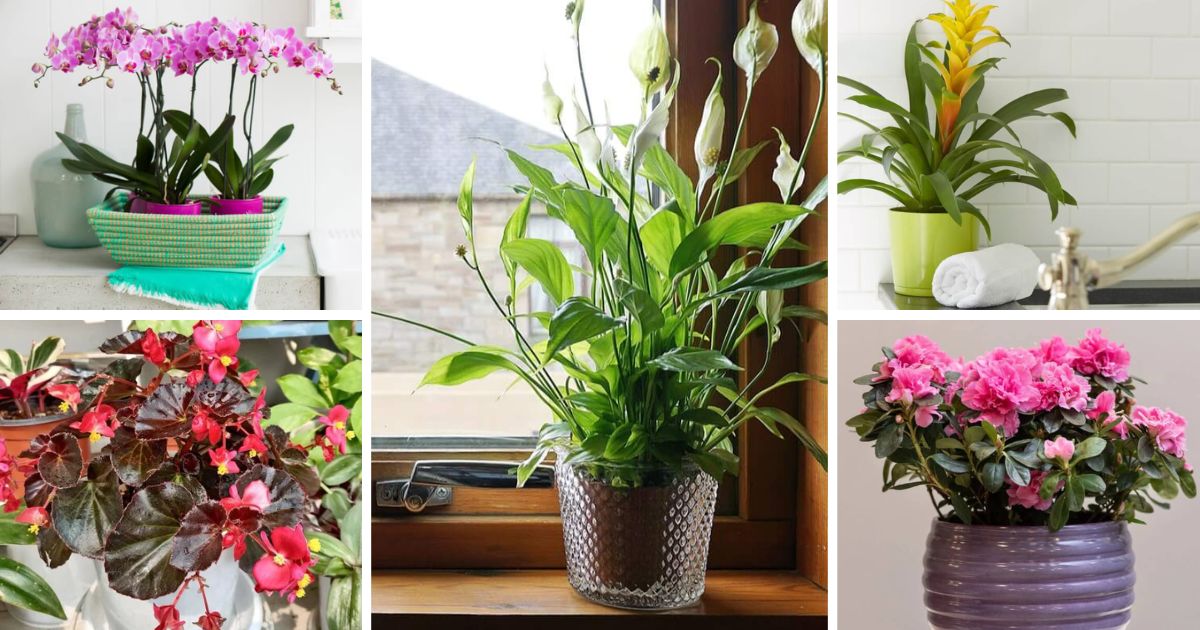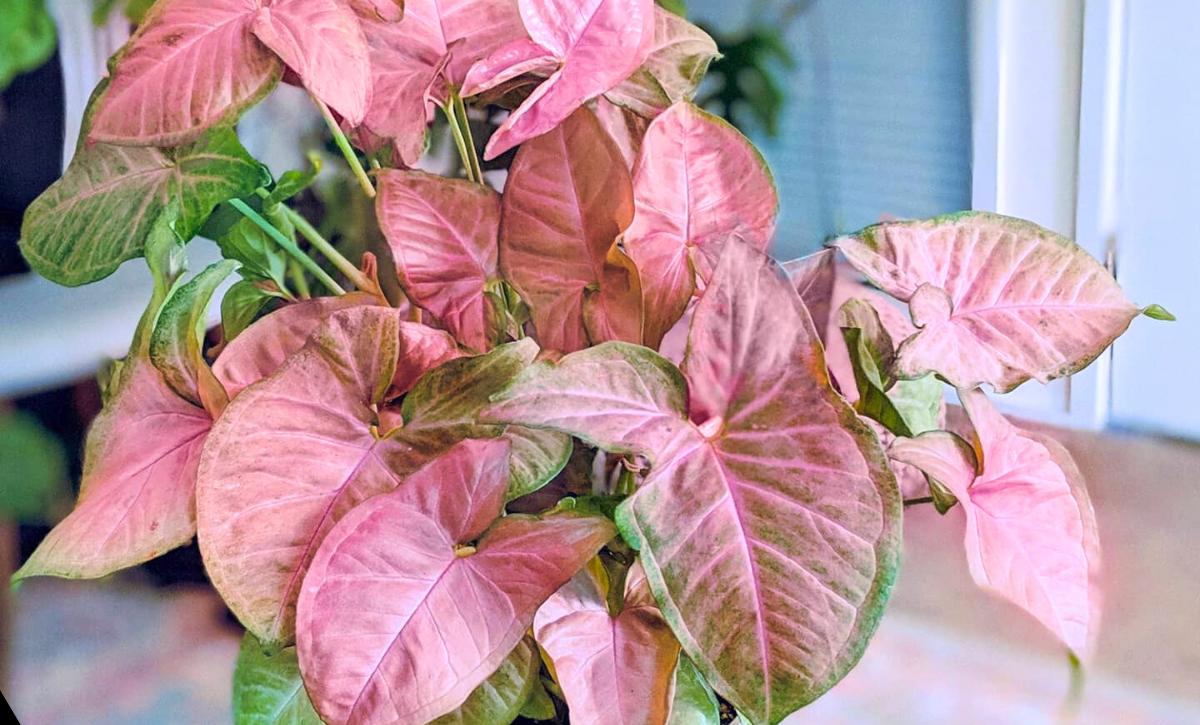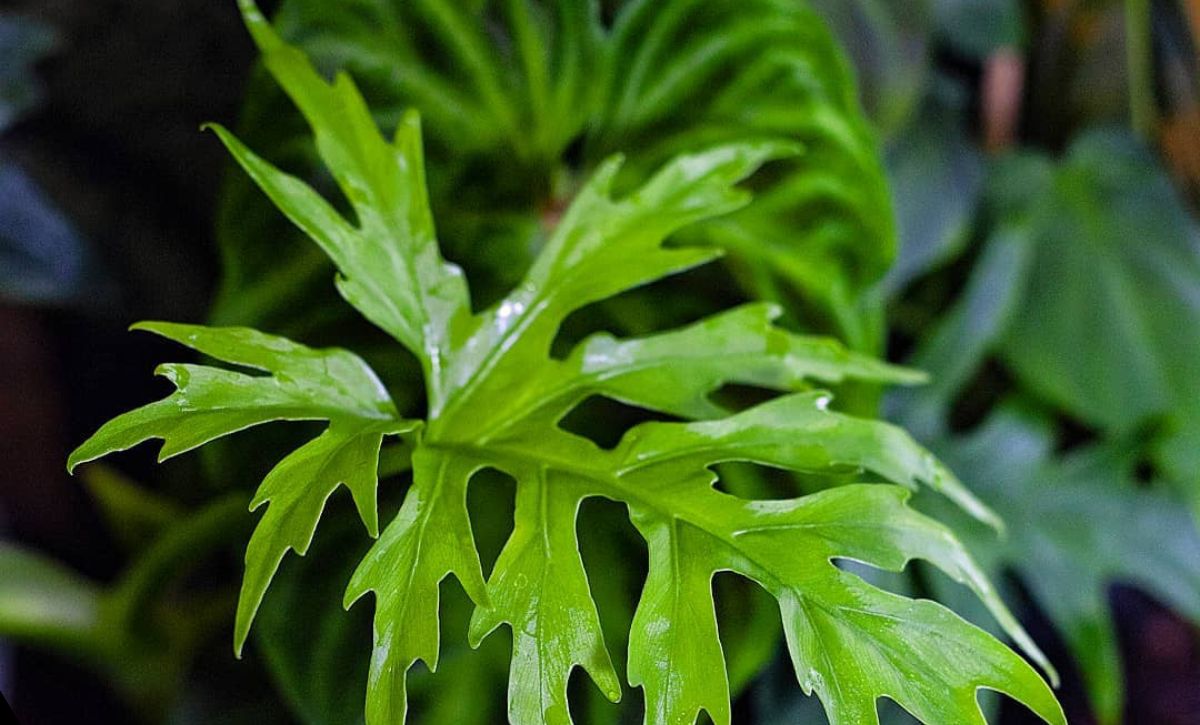Suppose you have a tight schedule but would still love to adorn your house with a beautiful plant. In that case, the Alocasia purple sword is the perfect low-maintenance houseplant for you. You can pair it with other plants like calatheas and philodendrons to create a stunning picturesque view!
Here is the general information regarding the Alocasia purple sword:
| Scientific name: | Alocasia lauterbachiana ‘Purple sword’ |
| Native habitat: | New Guinea and South-East Asia |
| Growth rate: | Fast grower |
| Type: | Perennial |
| Size: | It can reach a height of 1.2 meters (4ft) outdoors. Reaches a maximum height of 0.9 meters (3 ft) while indoors |
| Toxicity: | Toxic |
Also known as elephant ear plants, the Alocasia purple sword boasts long, spear-shaped, dark greenish-purple foliage with reddish hues and scalloped, stunningly beautiful edges.
With their amazing coloration and large leaves, these tropical plants are a unique Alocasia variety.
This article’ll provide a detailed care guide to keep your Alocasia healthy and beautiful. We’ll also cover the plant’s history and other cool facts, so keep reading so you don’t miss out.
Let’s begin.
Care Guide For Alocasia Purple Sword
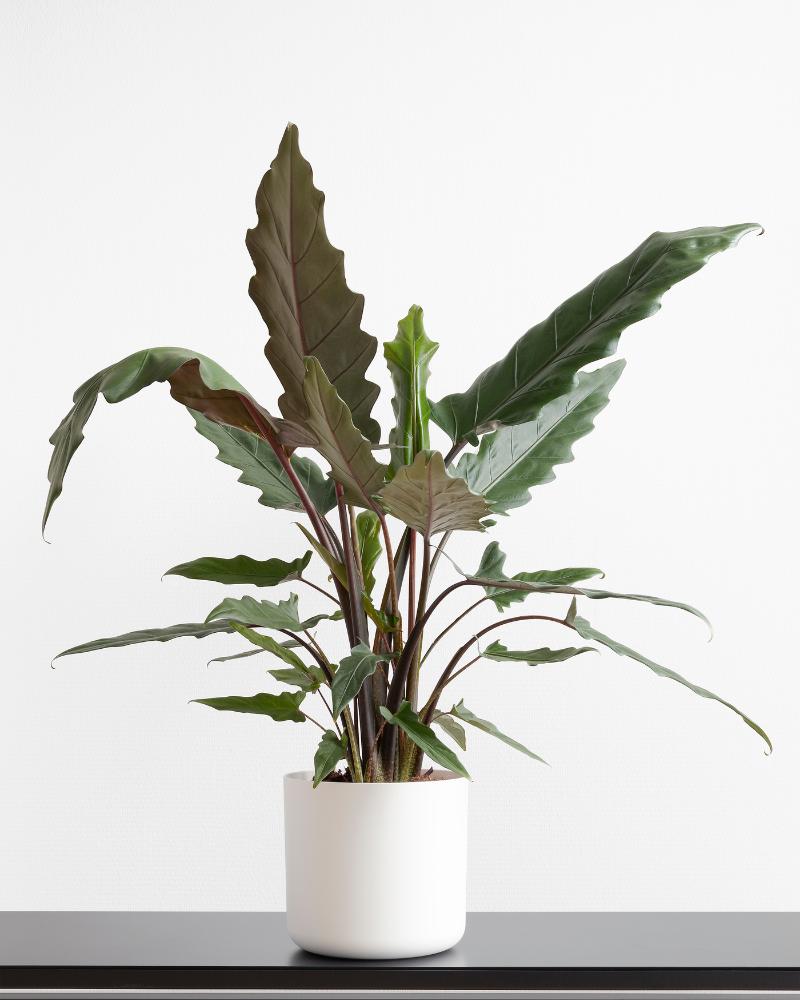
The plant care for Alocasia varieties is relatively easy, and the purple sword isn’t an exception. They require sunlight, water, and well-draining soil to thrive. However, regular maintenance is the key to keeping your Alocasia looking pristine.
Let’s get into details and learn more about keeping your alocasia plant as good as possible.
Light Requirements
Since the Alocasia purple sword is a tropical plant with specific light requirements. In the wild, these plants are protected from direct sunlight via the shade of tall trees. You should create a similar environment for your Alocasia back at home.
Alocasia purple sword flourishes in bright indirect light since this will not lead to leaf burn. Avoid placing this aroid on the north side of your house. Otherwise, your Alocasia won’t receive enough sunlight and will start fading and lose its color.
The best place for your Alocasia purple sword is on an east-facing windowsill. You can be guaranteed your plant will receive enough sunlight in this position. However, you can also keep the plant a few feet away from a west or south-facing window.
Enough indirect sunlight is vital in keeping your alocasia plant in the best shape.
Climate and Temperature
The Alocasia purple sword loves warm climates and loathes colder ones. The plant thrives in temperatures ranging from 18 and 23°C (65 and 75℉). Temperatures below 15°C (60℉) will lead to the drooping of leaves and the death of your plant.
To avoid this, keep the thermostat above 15°C (60℉). The Alocasia purple sword also loves humidity, so avoid placing it below the AC.
Additionally, avoid temperature swings for your alocasia plant and keep it away from draughts. You should consider These vital factors when looking for a home for your Alocasia.
Water Requirements
Since Alocasias are tropical plants, they adore moisture. Nonetheless, avoid keeping your Alocasia resting in the water. This can lead to fungal infections such as root rot.
Water your Alocasia when the topsoil is dry. Water the plant thoroughly as soon as the top 2.5-7.5 centimeters (2-3 inches) are dry. Ensure your pot has drainage holes to get rid of any excess water.
A cool hack is watering your Alocasia often but with smaller amounts. The soil will constantly be moist and won’t be clogged.
It would be best to have a different watering schedule for different seasons. The Alocasia purple sword is actively growing in spring and summer, so you’ll need to water it more during these periods. This is because these months have higher temperatures, and your plant will require more water to prevent dehydration.
However, reduce watering during autumn and winter since this is when your Alocasia enters dormancy. You don’t have to worry about your plant drying out during the colder months, so you can allow the solid to completely dry between waterings.
Never overwater your Alocasia purple sword since this could have serious repercussions, such as the death of your plant!
Humidity Requirements
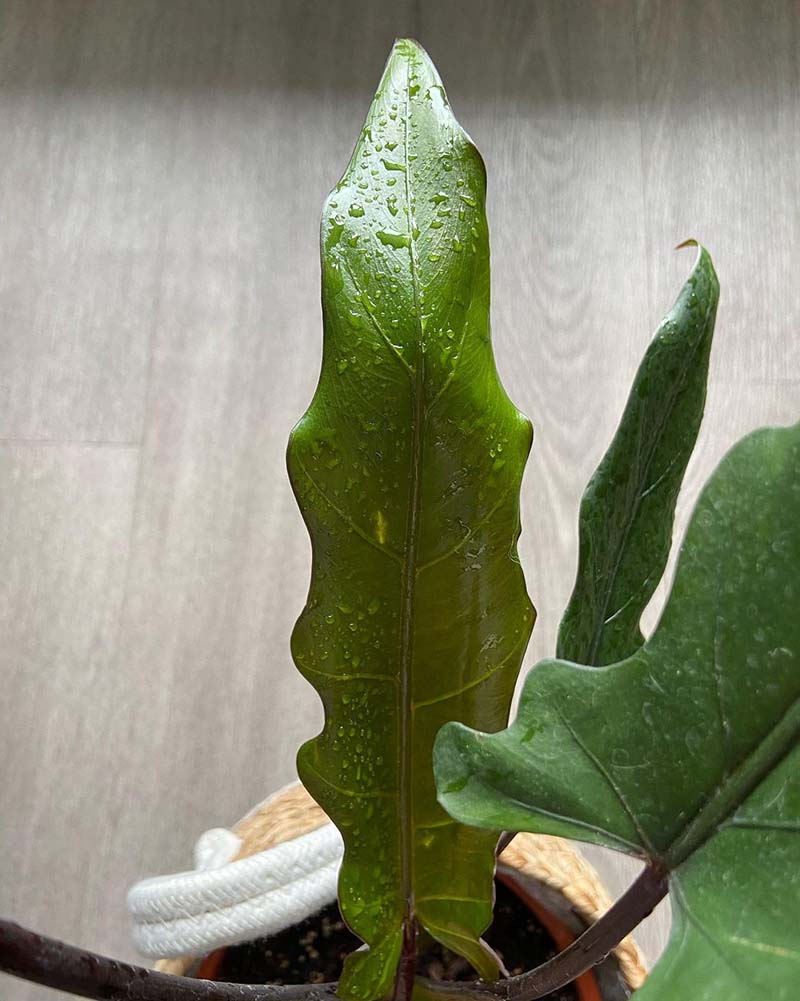
credit: lesplantesdedriss
The Alocasia purple sword loves humid conditions, which is no surprise since it’s a tropical plant. The ideal humidity level for the plant is around 70%. This Alocasia can tolerate lower humidity levels, but anything below 45-50% is catastrophic.
Not all homes will have this kind of humidity level. However, don’t worry! There are several ways you can increase humidity levels.
One way is through the pebble tray method. This fairly simple technique involves putting some rocks (not necessarily pebbles) in a tray and pouring water over them. Take your Alocasia and place it over the tray, and that’s it! This way, you can raise humidity specifically for the plant through the evaporating water.
Another way is misting your Alocasia, although this comes with a risk. The problem isn’t actually misting but letting the leaves stay wet for long periods. This could lead to fungal disease, which you want to avoid.
If all these DIY solutions seem slightly tedious, there’s always the option of investing in a humidifier. This will take care of your humidity level issues, and you won’t have to worry about fungal diseases.
Soil Requirements
The best plant care you can give your Alocasia purple sword is mimicking the environment of southeastern Asia rainforests. This includes the type of medium you will use.
Alocasia plants love well-drained, moist soil with plenty of organic material and nutrients. You can make your own aroid potting mix or purchase one.
Add coco coir or perlite to your preferred soil mix to aid drainage and reduce the risk of root rot. Also, incorporate peat moss or sphagnum moss to improve the moisture retention of your medium.
Moss is a handy ingredient. It retains moisture and provides it to your plant whenever it requires it!
Lastly, add horticultural charcoal or orchid bark (or both combined) to improve air circulation and prevent root rot.
Fertilizer Requirements
The best fertilizer for your Alocasia is a water-soluble slow-release fertilizer, so ensure you get one at the checkout with your aroid potting mix.
During its growing season, that is, in spring and summer, fertilize your Alocasia purple sword twice a month. Stop fertilizing when the plant enters dormancy.
Let me give you a piece of advice. Always water your plants before fertilizing them! Fertilizers contain chemicals that will cause fertilizer burn and damage roots in dry soil.
Repotting Time
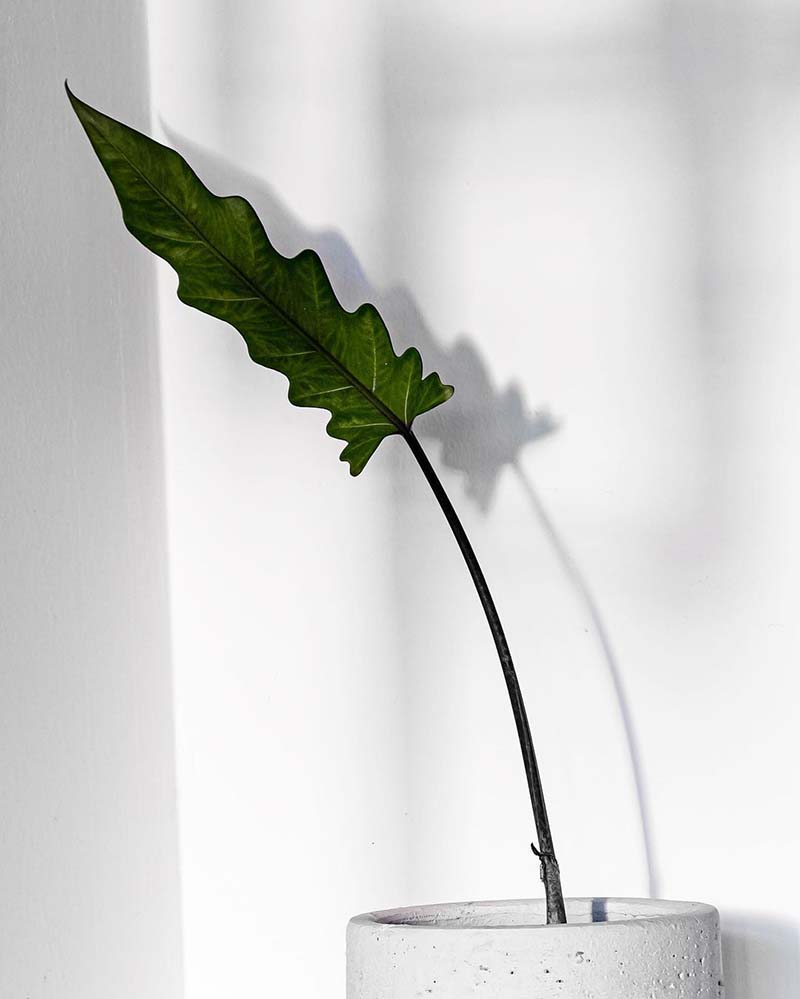
credit: taylorrmoonplants
The Alocasia purple sword needs repotting once a year. This is because it’s a fast grower. A good sign to know if your Alocasia needs repotting is protruding roots from the pot.
Repot the plant when it’s in its growing season, i.e., spring. During this period, roots are still actively growing, and they will have ample time to adjust to the new pot before the plant enters dormancy.
It’s advisable to divide the roots of the plant when repotting. This helps the plant to grow faster while maintaining a considerable height.
Additionally, you can use some offset divisions for propagation when dividing the roots. There’s no harm in having more beautiful plants in your home, right? The more, the merrier!
Propagating the Alocasia Purple Sword
It’s important to note that Alocasias grow from rhizomes found under the ground before you go on ahead to propagate your plant. This means Alocasias can be propagated using these offsets.
Sadly, leaf or stem cuttings aren’t an option when propagating Alocasia purple swords. However, we’ve got you covered! Here are some cool tricks and tips on how to propagate your Alocasia.
The 5 Stages of Propagation
Stage 1. The first thing you need to do is loosen the soil around the roots. Then, carefully remove the plant from its pot and get rid of the excess soil.
Stage 2. Start looking for offsets. You can see these baby plants growing from the mother plant. Each one of them will grow into a different plant.
Stage 3. Carefully separate the offsets from the mother plant. Avoid violent tugging or pulling since it can cause severe damage to the mother plant. Use gardening shears or a sharp knife to cut them off. Ensure you sterilize your tools and wear gloves to avoid giving your plants bacteria infections that could kill them.
Stage 4. This step involves planting the offsets in a new pot. Fill your new pot with fresh, aerated, well-draining soil with organic matter. Do the same for the mother plant, and find a bigger container if you plan on repotting it too.
Stage 5. Lastly, provide your plants with enough water, place them where they’ll receive plenty of bright indirect sunlight, and you’re good to go!
The good thing about offsets is that they already possess root systems. This means it will take a little time before you start seeing your plants thriving.
Pruning
The fast-growing Alocasia purple sword needs regular pruning to keep it in check. Please do so to avoid a really wide and messy plant.
Also, drying or dead leaves will need to be removed to keep your Alocasia beautiful, healthy, and clean.
Look out for irregularities on the leaves and prune any if you notice them. These could be a sign of disease, and they must be cut and thrown away to prevent the disease from spreading further.
Cleaning
The Alocasia purple sword has large foliage that needs to be cleaned to maintain that beautiful and colorful look.
Use a wet cloth to clean off the dust and ensure to dry the leaves afterward. You can also let your Alocasia dry naturally but don’t add more moisture through misting or spraying.
Cool Facts About The Alocasia Purple Sword
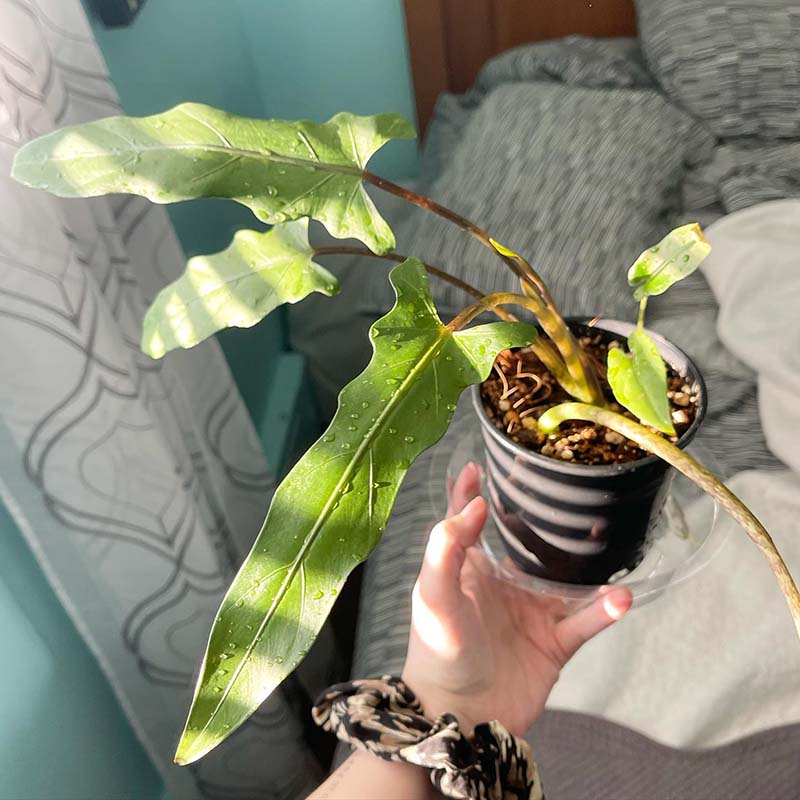
credit: plantsaglam
If you thought that’s all there is about this plant, you’re wrong! In this section, we’ll learn more about the history and origin of the Alocasia purple sword and common issues you may face with the plant.
Let’s have a look.
History
The Alocasia purple sword belongs to the Araceae family. This family of plants originated from Polynesia. The plant has been known by many names over the years.
The German botanist Heinrich Gustav Engler was the first to identify and catalog the Alocasia purple sword in subtropical Asia under the Schizocasia genus. This was in the late 18th century (around 1898).
The botanist Dan Henry Nicholson, after almost a century later (around 1968), categorized the plant as a member of the Xenophya genus.
Lastly, in 1990, Australian botanist Alistiar Hay gave the plant the popular name that we call it today.
Another interesting fact, according to Garden Chronicles 3, the Alocasia lauterbachiana was also known as Alocasia wavriana.
Leaves and Flowers
The Alocasia purple sword’s foliage is the most amazing thing about the plant. The name itself says it all!
The dark green, sharp, sword-like leaves will leave your guests with jaws dropping. What’s more, it has dark maroon-purplish veins and undersides that give the plant a striking look like no other.
Also, it will blend in perfectly with other Alocasia varieties. Try matching it with the Alocasia odora variegata, which has adorable white variegations.
It may come as a surprise to you, but this plant is capable of producing flowers. However, the green and purple-colored leaves are no match for its glorious foliage.
The Alocasia purple sword will flower all year long if it receives the proper care it deserves.
Common Issues
Just like almost every other plant, the Alocasia purple sword is also prone to diseases and pests. With good care and attention, you can avert some of these issues. Nonetheless, it wouldn’t hurt to learn more about them.
Pests
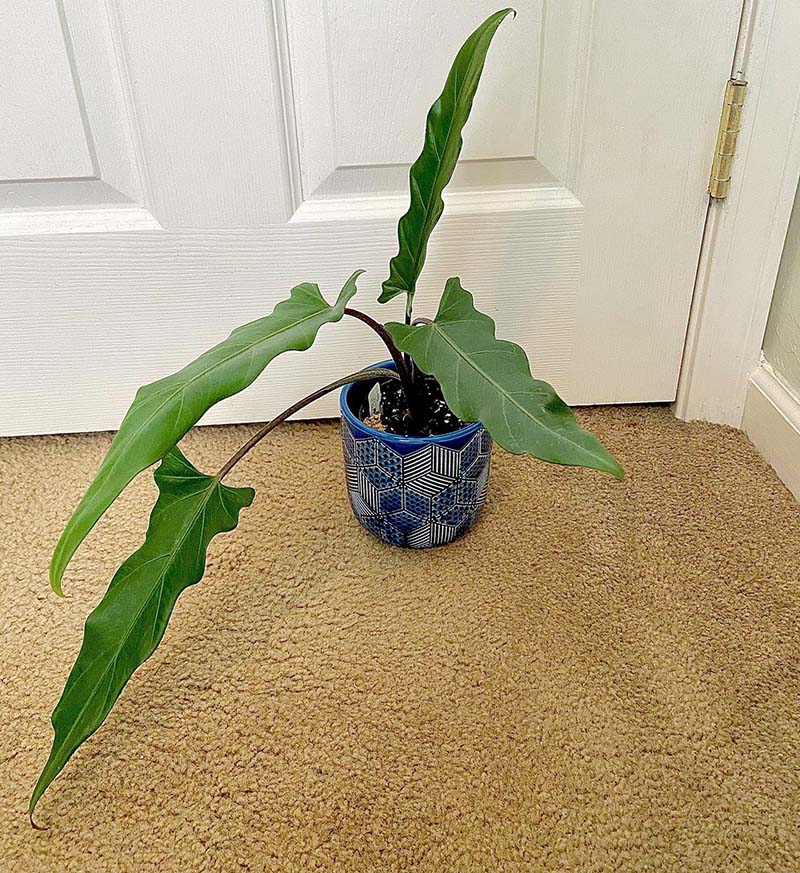
credit: potitlikeitshot
The Alocasia purple sword is mainly attacked by aphids, mealy bugs, and mites. You can eliminate these pests by rubbing alcohol or with neem oil. We advise against the use of alcohol unless it’s a severe pest infestation.
Insecticidal soaps are also another great option you can employ to solve this issue. The best solution is, however, preventing these pests from ever appearing. You can accomplish this by spraying insecticides every now and then.
This will also take care of your dust problem and save you the trouble of wiping off the dust!
Diseases
Root rot is one of the main diseases affecting the Alocasia purple sword.
Root rot can be stopped, and your plant can be saved if noticed in its early stages. One sign of root rot you should look out for is dark brown or black spots encircled by a yellowish color. Cut off the infected leaves immediately once you notice this.
Remember to allow the soil to dry to avoid the chances of root rot occurring. A better solution would be repotting the alocasia plant with new soil. Lastly, remove any rotting roots that you find.
How to Identify Problems Early On
The best way to manage these issues is by detecting them while they are still in their early stages. You can achieve this by monitoring your Alocasia’s leaves and their color.
Yellow leaves usually indicate that your Alocasia is overwatered. If the leaves are only beginning to turn yellow, reducing watering may save them. However, if they are yellow to the point that they can’t be salvaged, then you probably have to cut them.
Other signs that show your Alocasia purple sword is overwatered are the appearance of brown spots and drooping.
On the other hand, gray-colored leaves, a withering plant, and stunted growth are all signs of your Alocasia being underwatered.
Lastly, brown spots on the leaves can also be a sign of leaf burn from the sun. These brown spots are not at all similar to those due to underwatering. Unlike the underwatered ones, they aren’t encircled by yellow circles.
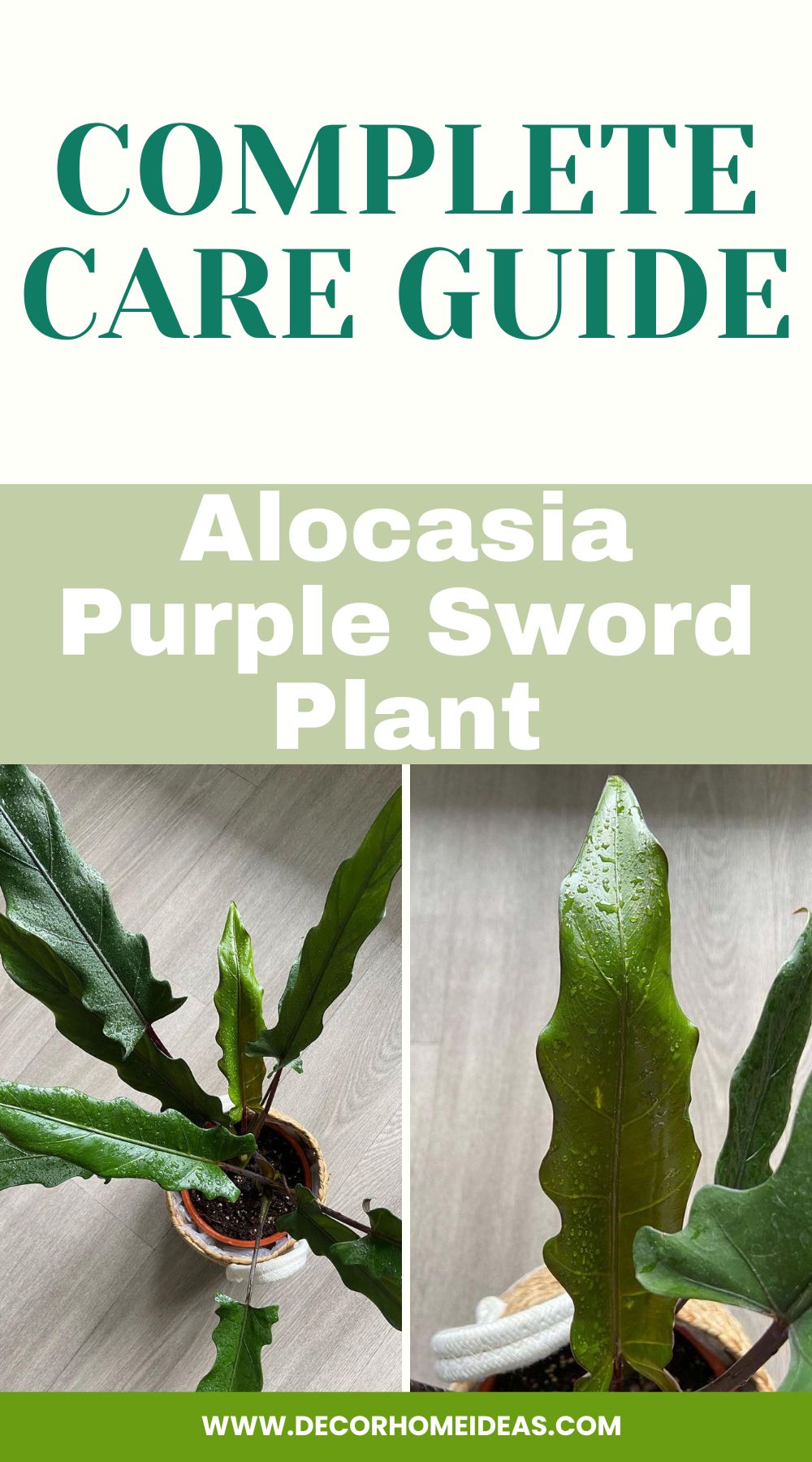
Commonly Asked Questions
This section will cover some of the most frequently asked questions about the Alocasia purple sword as well as their answers.
Is the Alocasia purple sword rare?
Although many people claim that the Alocasia purple sword is a rare plant, it’s quite a misconception. The plant is native to Southeast Asia but can be bought from a local online store.
The exotic plant is also quite affordable!
What is the difference between a sword plant and a purple sword?
The Purple sword is a member of the Araceae family and belongs to the genus Alocasia. It’s also known as Alocasia lauterbachiana.
On the other hand, the Sword plant is a member of the Alismataceae family and belongs to the genus Echinodorus. The scientific name for the sword plant is Echinodorus amazonicus (Amazon sword plant) or Echinodorus griesbachii.
The purple sword is native to New Guinea and Polynesia, while the sword plant can be found in the western hemisphere.
The sword plant can be used in aquariums, ponds, and other artificial aquatic habitats since it’s also an aquatic plant.
The purple sword plant, however, is a tropical plant and can’t survive underwater.
What does the Alocasia purple sword taste like?
The Alocasia purple sword contains oxalate crystals in its foliage which give it a sour taste.
These crystals are very toxic and can cause burning of the airways and mouth, swelling and skin irritation, diarrhea, and vomiting if ingested by humans. They can also lead to the death of your pets, so be very wary.
Conclusion
I think it’s quite clear that the Alocasia purple sword is a wonderful houseplant that will ultimately improve your home decor.
It’s a low-maintenance plant that won’t take too much of your time while caring for it.
So, go on and beautify your home with majestic, beautiful plants.
Have a good day!

